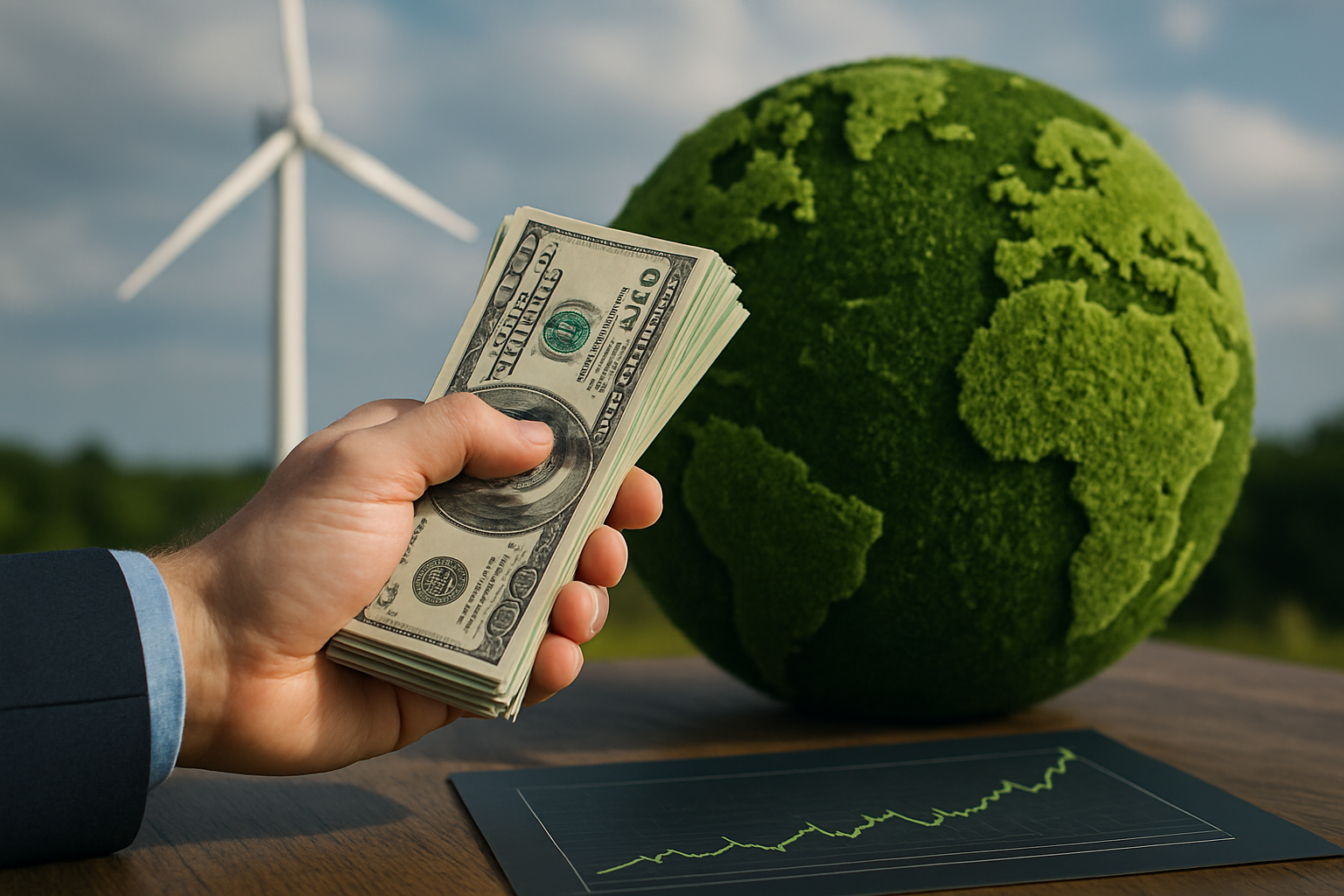Navigating the Green Bond Revolution: A New Frontier in Fixed Income Investing
As the global economy shifts towards sustainability, a groundbreaking investment vehicle is gaining traction in the financial world. Green bonds, once a niche product, are now at the forefront of fixed income innovation, offering investors a unique opportunity to align their portfolios with environmental goals while potentially reaping attractive returns. This article delves into the intricacies of green bonds, exploring their meteoric rise, market dynamics, and implications for both investors and the planet.

The Genesis of Green Bonds
The concept of green bonds traces its roots back to 2007 when the European Investment Bank issued the world’s first climate awareness bond. This pioneering move laid the foundation for a new category of fixed income securities specifically designed to fund projects with positive environmental impacts. The World Bank followed suit in 2008, issuing its first green bond and setting the stage for rapid market expansion.
Initially, green bonds were primarily the domain of supranational organizations and development banks. However, as awareness of climate change and sustainability issues grew, corporate issuers began to enter the market. This shift marked a turning point, broadening the scope of green bond offerings and attracting a wider range of investors.
Market Growth and Current Landscape
The green bond market has experienced exponential growth over the past decade. From a modest $3.4 billion in issuances in 2012, the market has skyrocketed to over $1 trillion in cumulative issuances by 2021. This remarkable trajectory reflects the increasing demand for sustainable investment options and the growing commitment of issuers to finance environmentally friendly projects.
Today, green bonds span various sectors, including renewable energy, clean transportation, sustainable water management, and energy-efficient buildings. Issuers range from governments and multinational corporations to smaller, specialized green technology firms. This diversity offers investors a plethora of options to tailor their green bond portfolios to specific environmental themes or risk profiles.
The Mechanics of Green Bonds
At their core, green bonds function similarly to traditional bonds. They are fixed income instruments that provide investors with regular interest payments and return of principal upon maturity. The key distinction lies in the use of proceeds: green bonds are earmarked exclusively for projects with environmental benefits.
To ensure transparency and credibility, most green bonds adhere to voluntary guidelines such as the Green Bond Principles established by the International Capital Market Association. These principles outline best practices for the use of proceeds, project evaluation, management of funds, and reporting. Additionally, many issuers opt for third-party verification or certification to enhance the credibility of their green claims.
Investment Implications and Performance
For investors, green bonds offer a compelling proposition: the opportunity to generate financial returns while contributing to environmental sustainability. But how do these instruments stack up against conventional bonds in terms of performance?
Research suggests that green bonds can offer comparable, and in some cases superior, returns to their traditional counterparts. A study by the Climate Bonds Initiative found that green bonds have historically demonstrated lower volatility and better liquidity compared to conventional bonds of similar credit quality. Moreover, as demand for sustainable investments continues to grow, some green bonds have commanded a “greenium” - a premium price due to their environmental credentials.
However, it’s important to note that the green bond market is still evolving, and performance can vary depending on factors such as issuer quality, market conditions, and specific project risks. As with any investment, thorough due diligence is crucial.
Challenges and Future Outlook
Despite its rapid growth, the green bond market faces several challenges. One key issue is the lack of standardization in green bond definitions and reporting standards. While voluntary guidelines exist, there is no universally accepted framework for what constitutes a “green” bond. This ambiguity can lead to concerns about “greenwashing” - the practice of overstating or misrepresenting the environmental benefits of financed projects.
Regulators and market participants are working to address these challenges. The European Union, for instance, is developing a comprehensive green bond standard to enhance transparency and credibility. As these efforts progress, the green bond market is expected to become more robust and accessible to a broader range of investors.
Looking ahead, the future of green bonds appears bright. With global commitment to climate action intensifying and investors increasingly prioritizing sustainability, the market is poised for continued expansion. Emerging trends such as transition bonds (which finance the shift from brown to green activities) and sustainability-linked bonds (where interest rates are tied to environmental performance metrics) are further expanding the sustainable fixed income landscape.
Key Considerations for Green Bond Investors
-
Evaluate the issuer’s overall sustainability strategy and commitment to environmental goals
-
Scrutinize the use of proceeds and ensure alignment with recognized green project categories
-
Look for third-party verification or certification of green claims
-
Consider the bond’s financial characteristics, including yield, maturity, and credit quality
-
Assess the potential for price premiums or “greeniums” in the secondary market
-
Monitor ongoing reporting and impact measurement to ensure environmental objectives are being met
-
Diversify across different issuers, sectors, and geographies to manage risk
-
Stay informed about evolving regulations and market standards in the green bond space
As the world grapples with the urgent need to address climate change, green bonds stand out as a powerful tool for channeling capital towards sustainable solutions. For investors, these instruments offer a unique opportunity to align financial goals with environmental values, potentially reaping both monetary and ecological returns. As the market matures and standardization improves, green bonds are poised to become an increasingly important component of fixed income portfolios, paving the way for a more sustainable financial future.





